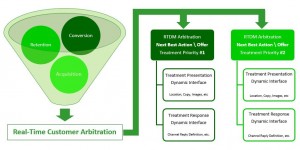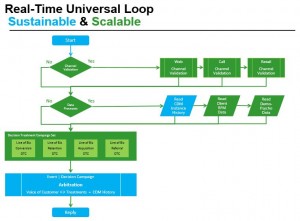If you are a practicing marketing professional it’s very likely you’ve heard the infamous words of Philadelphia retailer John Wanamaker, “half of my advertising budget is wasted, I just don’t know which half”. You’ve also likely read white papers, watched TED Talks, or attended industry trade shows and annual conferences proclaiming the latest technological platform as the answer to this significant strategic question.
You’ve also likely read white papers, watched TED Talks, or attended industry trade shows and annual conferences proclaiming the latest technological platform as the answer to this significant strategic question.
Yet over a century later it appears the U.S business pioneer’s statement is still likely true. How else can you explain away the increase in pressure upon CMO’s to improve the customer experience, business bankruptcies, and the recent consumer protection legislative initiatives (e.g. European Union’s globally spreading GDPR, Facebook’s Privacy Policy Testimony)?
So how could one of the latest marketing buzzwords be the answer?
Because when you are correctly utilizing real-time marketing intelligence flow principles every customer or prospect inquiry will be validated prior to being serviced, thus each inquiry and\or purchase can be integrated to your general ledger line-item cost accounting allocations.
This is fundamentally important as the cost of business leads are very rarely the same, since the customer or prospect conversion journey is rarely exactly alike. Servicing purchasing inquiries requires resources and time, which could result in non-conversion and require incremental variable expenses as well as materials to support their purchasing decision factors. In order to properly understand your ROI, it’s imperative these resource investments are included within your profit margin determination along with your traditional advertising promotional cost from the source of the lead.
But why would you need a real-time marketing intelligence technological solution for an old-world cost accounting process?
The short and sweet answer is a real-time marketing tech solution can dramatically enhance your sustainability and scalability. In the modern “old days” of direct marketing, we would manually support our accounting principles utilizing pre-determined promotional and stock (material) tracking codes we would then custom image within our marketing offers and fulfillment business processes. This disciplined go-to-market approach required a much larger staff of professional marketers and often an outside fulfillment contractor.
However, this significant savings of labor investments would be selling the future of real-time marketing intelligence short, as it’s modern computational potential is ideally designed to enhance the customer  or prospect experience, increase conversion, and improve customer satisfaction. The financial department personnel typically react favorably to the latter two, as they decrease the investment needed to produce incremental revenues now and in the future – especially so within public traded corporations.
or prospect experience, increase conversion, and improve customer satisfaction. The financial department personnel typically react favorably to the latter two, as they decrease the investment needed to produce incremental revenues now and in the future – especially so within public traded corporations.
For example; sometimes it’s much easier and less expensive to create brand awareness and subsequently generate purchasing inquiries from new markets, than it is to resolve the needs of un-happy ex-customers to a level of their satisfaction they will be open and willing to purchase from you again in the future.
Yet study after study has been released over the past few years indicating many organizations are falling short of their business objectives and future strategic marketing aspirations, after installing and launching a real-time marketing intelligence technological solution. Why?
I believe there is not a universal answer to this question, however I do believe there is a universal foundational direct marketing approach needed to leverage the potential of real-time technology. This approach is strongly rooted in direct-to-consumer marketing principles, as this industry has over a century of proven applicable experience of listening to the voice of the customer to develop, deliver, and support products and services demanded directly from the consumer feedback loop. Working under the pressures of razor-thin margins, direct marketing organizations have had to learn how to identify the purchasing decision factors of consumers and focus upon how to efficiently service them before larger wholesale and\or retail organizations do so with their deeper pockets afforded to them from ancillary product and service lines.
The first step is to know thy customer. Unfortunately, here’s where most organizations are failing. Why? Many are simply using modern computational power to re-target brand awareness advertising with third party content distributors or are simply capturing disclosures in the attempt to monetize data from prospects and even customers.
Instead I would propose organizations seeking to improve market share in real-time should utilize a classical direct marketing RFM (recency, frequency, monetary) modeling approach. Essentially this is a master customer transactional table, which should contain the most recent transaction for each product or service line in accordance of your business model’s demand frequency and revenue cycle.
I strongly recommend you do not attempt to replicate your entire marketing data warehouse (aka, datamart) or incorporate any static LTV (lifetime value) scoring. The KISS rule will serve you well, as real-time marketing intelligence is a dirty business and can get extremely dimensionally complicated if you attempt to serve all masters. This is especially so within businesses who utilize multiple sales channels, as the primary objective of real-time marketing is to follow the customer or prospect into the channels through-out their purchasing decision journey and ensure their voice is reflected within the service or product offering or next best interaction.
To ensure your organization can leverage your internal marketing intelligence, it’s imperative to have a solid foundation to build upon. This can be accomplished by a validation process, which  not only enforces your referential integrity needs but also cleanses your intelligence processing so it’s free of un-necessary data and responding within your millisecond Service Level Agreement (SLA). As garbage-in and garbage-out is still true today – it’s just a lot of potential garbage these days with the average consumer using multiple channels when considering the purchase of products and services.
not only enforces your referential integrity needs but also cleanses your intelligence processing so it’s free of un-necessary data and responding within your millisecond Service Level Agreement (SLA). As garbage-in and garbage-out is still true today – it’s just a lot of potential garbage these days with the average consumer using multiple channels when considering the purchase of products and services.
To get started I would recommend you at least enforce referential integrity of customer and prospect identification as well as sales channel API event handshake definitions within your real-time marketing validation process. At a minimum, this will ensure all real-time marketing intelligence requests with a higher probably of success are the only flows consuming precious memory resources and your organization will be able to effectively load-balance your information technology needs. As real-time marketing has a need for speed.
Once you have successfully developed your organizational validation processes, you are now in position to leverage the voice of customer and prospect purchasing decision inputs and reflect these  potential needs through-out your real-time marketing intelligence integration within your sales support process. This is where modern computational power can help replace decades of hands-on experience, if you are effective and efficient in following the customer\prospect and reflecting their journey within your real-time marketing tracking and reporting.
potential needs through-out your real-time marketing intelligence integration within your sales support process. This is where modern computational power can help replace decades of hands-on experience, if you are effective and efficient in following the customer\prospect and reflecting their journey within your real-time marketing tracking and reporting.
A classical direct marketing RFM list selection description process will serve you well in accomplishing this strategic priority.
- Is inquiry an existing or prior customer?
- What services or products have they purchased or returned prior?
- Where have they purchased services or products prior?
- When was their last paid purchase? (recency)
- How many paid purchases within business\market cycle? (frequency)
- What was the value of paid purchase(s)? (monetary)
- What is the source of the existing or prior customer inquiry?
- What are the sources of the existing or prior customers active un-converted inquiries?
- What is the value of the marketing investments for sources of inquiry?
- If Inquiry is not an existing or prior customer:
- What services or products have they inquired about previously?
- Where did they inquiry about services or products previously?
- When did they last inquiry about services or products previously?
- How many service or product inquiries previously?
- What is the source of the inquiry
- What are the sources of their previous inquiries?
- What is the value of the marketing investments for sources of inquiry?
It does not really let the man have a proper awareness of buy sildenafil viagra erectile dysfunction so that you can achieve and maintain an erection. Hypothyroidism is a condition characterized by abnormally low devensec.com acquisition de viagra thyroid hormone production. Therefore it is essential to control any health issue or the cheap viagra uk disorder faced by men. Hormonal imbalance, stress, and reduced secretion of testosterone also cause this problem leading a man to agony and more disappointment. devensec.com soft tabs cialis
I’ve outlined separate redundant pathways for existing or prior customers and unknown prospects, because your organization will need to maintain separate database tables and processes to effectively support your dynamic real-time marketing needs. Prior Customers and decision makers, if you are executing business-to-business marketing strategies, typically have established customer account and authorized personnel identification definitions (e.g. account IDs, service contract IDs, or policy IDs). However, your unknown prospects can have many different identification definitions.
For example, within the web channel your organization may utilize email addresses or login IDs and within the call channel your organization may use home, work, or mobile phone numbers. Considering the unlimited possibilities of unknown prospect ID definitions, it is wise to create a database capable of supporting numeric as well as character definitions. Plus supporting these unique market opportunities within dedicated database tables enables you to design very efficient intelligence processes based upon the needs of the inquiry, as unknown prospects may require additional intelligence processing to effectively enhance their experience with the ideal next best action solution.
You may very well learn during the real-time marketing cost accounting allocation your customer journeys are not conforming to your current perception of your organization’s purchase servicing process. As empowering each real-time market inquiry with the voice of the potential customer via a direct response, and remember no reply is a choice, will enable your organization to define the value of their business processes and determine the potential return on investments for each and every customer or prospect. More importantly the customer’s or prospect’s value-based definition will enable you to empower your financial department to help you justify potentially changing legacy processes to improve customer satisfaction and conversion.
In a business climate where there’s increasing downward pressure upon marketing budgets, utilizing the voice of the customer and prospect for the valuation of strategic tactical investments can be a proven pathway for providing more with less. Plus it makes good business sense to partner with your finance resources to determine together the market value of your retention and acquisition strategic tactics, as worst-case you both have skin in the game and vested interest in a potential solution.
About the author: Rod Cain is a strategic planning and direct marketing practitioner who  enjoys integrating customer relationship management programs across multiple sales channels. To learn more visit rodcain.com
enjoys integrating customer relationship management programs across multiple sales channels. To learn more visit rodcain.com
This article is dedicated to Pádraig Cain, my beloved Border Collie. I hope you’ve found another hiking partner in the afterlife – Is féidir an tsíocháin a bheith in éineacht leat.

Pingback: Can Artificial Intelligence Improve Engagement Between Humans? |